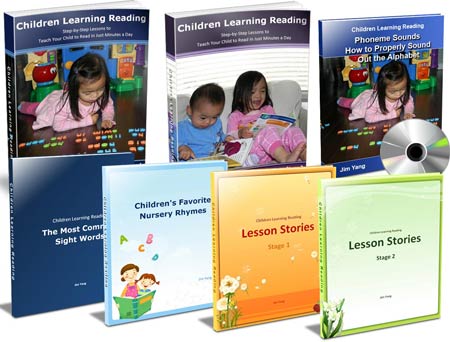Teach Children Letter Names & Sounds
By: ChildrenLearningReading.com
If you're a parent who wants to teach your child to read, it's important to know that the first step in learning to read involves recognizing at least some of the letters of the alphabet, their names, and the sounds they make. A child must learn to recognize letters and their corresponding sounds, and be able to identify them quickly and without hesitation, in order to begin reading.
There has been a longstanding debate about the most effective way to teach reading. Some argue for whole language programs, while others believe that incorporating phonics and phonemic awareness instruction is the best approach. The National Reading Panel has reviewed over 1,900 studies and concluded that phonics and phonemic awareness instruction produces superior reading results. Therefore, it's crucial to focus on teaching children phonics and phonemic awareness, as these skills lay the foundation for their future reading success.
There has been some discussion about the best approach to teaching children the letters of the alphabet. Some experts argue for teaching only the names of the letters, while others suggest teaching only the sounds that each letter represents. However, recent studies have shed light on this debate, showing that teaching children both letter names and sounds simultaneously produces the best results. In fact, a study conducted in Australia involving 76 preschool children found that teaching letter forms and letter sounds separately had little value. The children who received training in both phonemic awareness and letter awareness were more successful in learning letter-sound correspondences than those who did not receive this training. Furthermore, the children who were trained in phonemic awareness had an advantage on recognition tasks. [1] These findings suggest that it is important to incorporate both letter names and sounds into early literacy instruction.
As a parent or educator, it's important to understand that teaching a child only the names of alphabet letters or only the sounds they make is not sufficient. To achieve effective learning, a child needs to learn both the name and sound of each alphabet letter. While teaching your child the alphabet, it's recommended to incorporate both the name and sound of the letter. For example, instead of just saying "this is the letter A", you could say "This is the letter A, and the letter A makes the /A/ sound." (Note that the "/A/" denotes the sound that "A" makes, not its name.) You can use this approach to teach all the other alphabet letters. Studies have shown that teaching the letter names and sounds together can be highly effective in helping children learn. As a result, this is the method that many educators use to teach the alphabet to children.
A study was conducted with 58 preschool children who were randomly assigned to one of three groups: letter names and sounds, letter sounds only, or a control group receiving instruction on numbers. The findings of this study were in line with previous research, indicating that children who received instruction on both letter names and sounds were more likely to learn the sounds of letters that had cues in their names. This highlights the importance of teaching both the names and sounds of alphabet letters to young children in order to facilitate their learning. [2]
If you want to teach your children the sounds of letters effectively, it's essential to first master the correct pronunciation of the letters yourself. As a parent, you must be able to say the sounds of the letters properly before teaching them to your children. This can be more challenging than you might think.
Notes:
1. J Exp Child Psychol. 2009 Sep;104(1):68-88. Epub 2009 Mar 5.
The genesis of reading ability: what helps children learn letter-sound correspondences?
Castles A, Coltheart M, Wilson K, Valpied J, Wedgwood J.
Macquarie Centre for Cognitive Science, Macquarie University, Sydney, NSW 2109, Australia.
2. J Exp Child Psychol. 2010 Apr;105(4):324-44. Epub 2010 Jan 25.
Learning letter names and sounds: effects of instruction, letter type, and phonological processing skill.
Piasta SB, Wagner RK.
Preschool Language and Literacy Lab, The Ohio State University, Columbus, OH 43210, USA.


